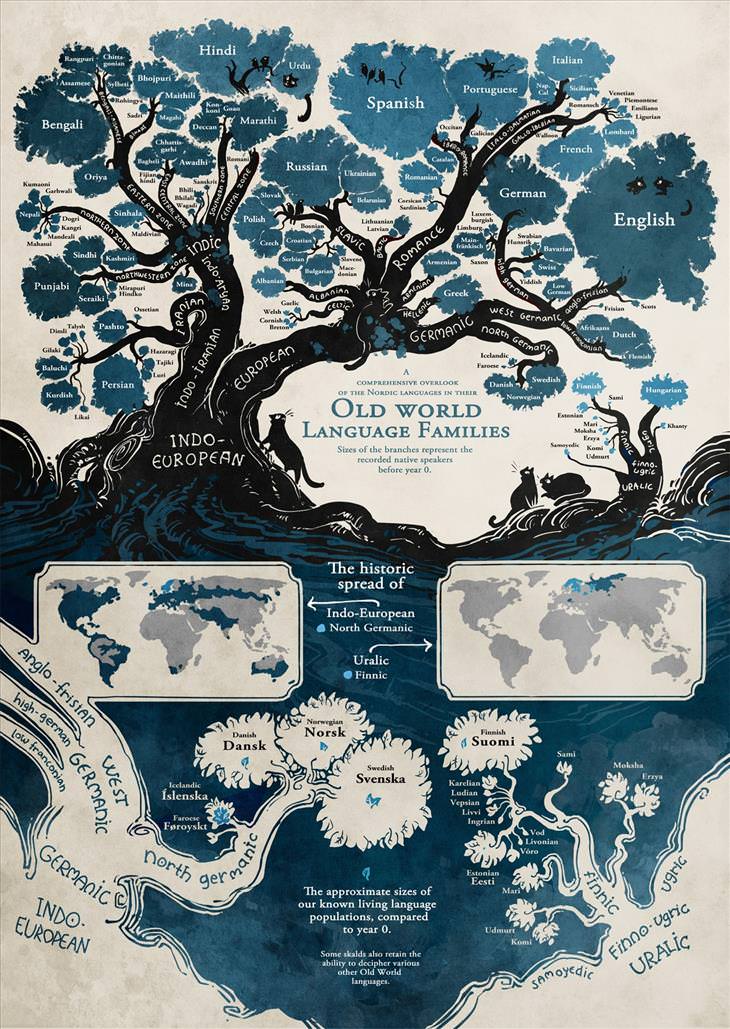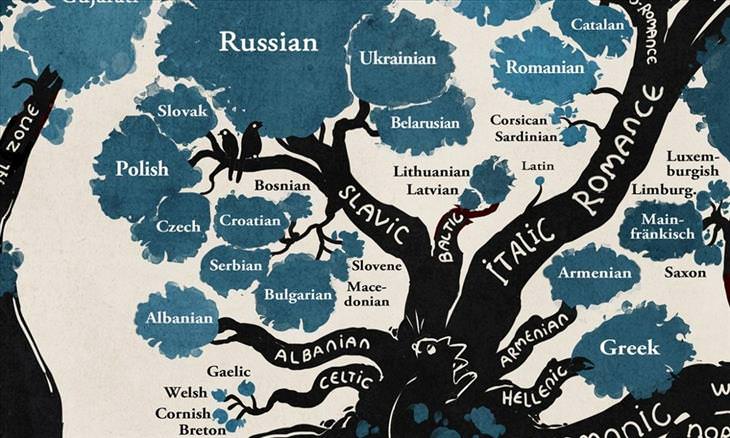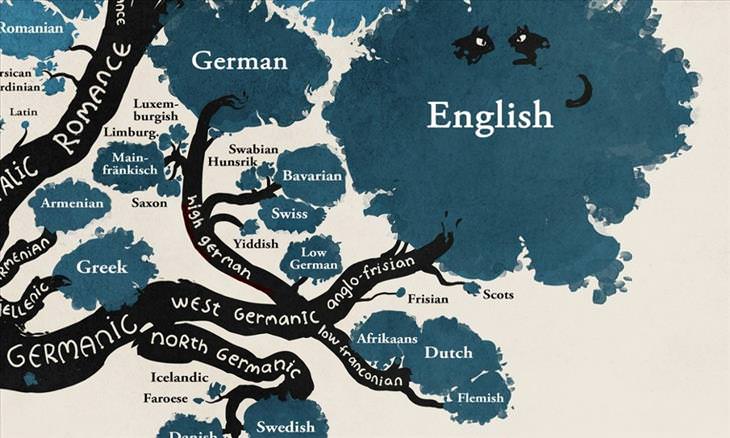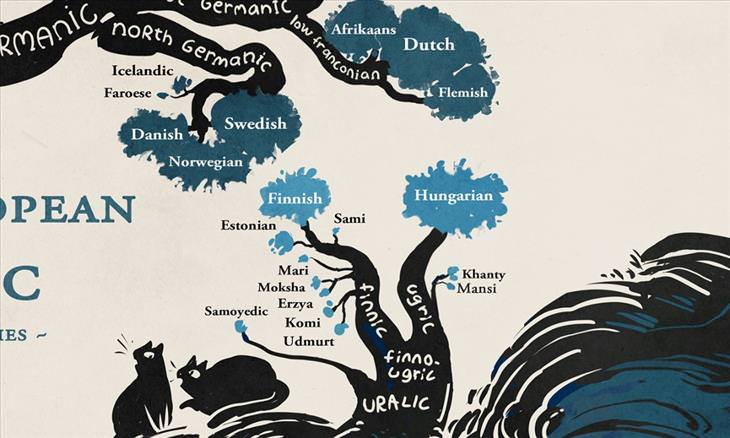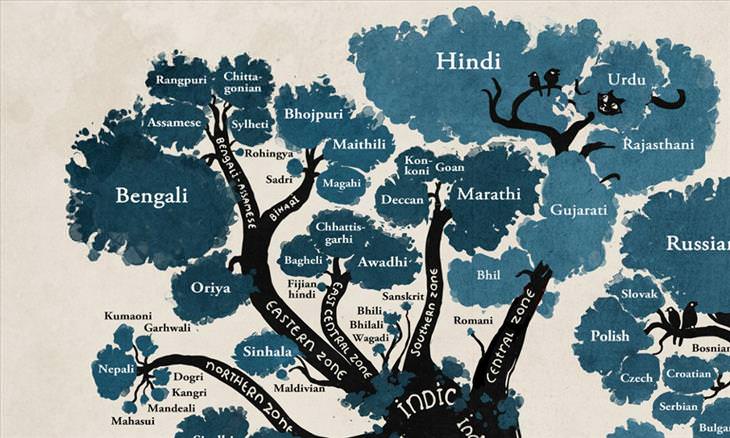
Are you aware that most of the languages that are spoken today can actually be placed into a couple of groups by their origin? This is what Minna Sundberg reveals in an elegant infographic of a linguistic tree which reveals fascinating links between different languages.
Using research data from Ethnologue, Sundberg was able to create a tree metaphor that illustrates how all major European, and many Eastern languages can be grouped into Indo-European and Uralic “families”. The whole image is full of languages, with bigger leaves representing those with the most native speakers. However, even this detailed image does not cover the immense variety of languages that exist.
Sundberg explains that “naturally, most tiny languages didn’t make it onto the graph. There’s literally hundreds of them in the Indo-European family alone and I could only fit so many on this page, so most sub-1 million speaker languages that don’t have official status somewhere got cut.”
Source: boredpanda
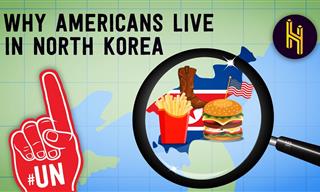 5:49
5:49
Who Are the Americans That Live in North Korea?
Considering North Korea's secrecy and animosity towards the US, it's surprising to learn that 200 Americans live in the Hermit Kingdom... Who are these people?

Forget Apples! It's an Egg a Day That Keeps the Doc Away...
According to new research, it could actually be an egg a day that keeps the doctor away.Find out more here!

5 Extremely Healthy Food Combos You Should All Know About...
When paired together, certain foods can be a lot healthier than if they are eaten on their own. Here are 5 extremely healthy food combinations.
 7:56
7:56
6 Chemical Reactions that Changed the Course of History
Although we rarely pay much attention to the chemistry that constantly surrounds us, these 6 reactions changed history.

Wow! This Made Me Want to Visit Japan
If Japan isn't on your travel list yet, it surely will be once you learn these cool facts!

Conspiracy Theories - A Few Fascinating Things to Consider
Conspiracy theories are easy to dismiss, but they are a normal and interesting part of human psychology. Learn 6 facts on conspiracy theories here.

15 Latin Phrases We Use to This Day Without Even Realizing
As an English, speaker you likely know more Latin than you ever thought you did. Just look at these 15 Latin phrases and see if you know what they mean...
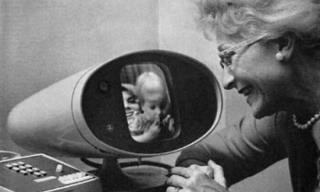
We Got Hold of Some Rare Historical Pics. Want to See?
It’s time for another fascinating collection of historical photos.

Life Has Changed a Lot Since These Photos Were Taken
These historic photos capture the everyday experiences of the last century, reminding us how much the ordinary things in life have changed.
 11:27
11:27
Looking at a 100 Years of High School Fashions...
Here's what high schoolers wore each decade of the 20th century.

15 Common Words You Are Pronouncing WRONG
Here is a list of some of the most common English words that are generally mispronounced by a majority of us.

Improve Your Critical Thinking Skills with These Great Tips
If you want to improve your critical thinking skills then you should take a look at these fantastic tips.

25 Photos That Capture Profound Historic Moments
We can see a whole century of monumental events go by in these photos...
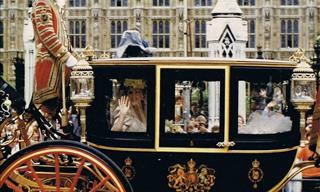
Look Back at These Iconic Royal Wedding Photos
Royal Weddings were always a cause for public celebration and fascination. Here are some of the most iconic royal wedding photos in history.

Don't Tell Anyone! These Secrets Are Only Known by 2 People
These secrets are so highly guarded that only two people in the world know about them.
 8:23
8:23
Learning to Trust Again - Rehabilitating an Abused Dog
Ralph the abandoned dog learns to trust again...

These Jaw-Dropping Photos Reveal the TRUE Scale of Things
When you see just how the size of a person compares to these massive natural wonders and human creations, you'll be utterly surprised!
 19:11
19:11
18 Things You Probably Didn't Know About Medieval Times
Watch Medieval Literature Dr. Dorsey Armstrong answer all the important questions related to the Middle Ages.
 5:54
5:54
She Will Never Forget Her Marriage Proposal. Ever.
This is a Marriage Proposal For the Books...

Witness the Might of the World's Greatest Empires
The world's greatest civilizations and empires had a marked effect on history and shaped the world as we know it today. Watch these informative videos.
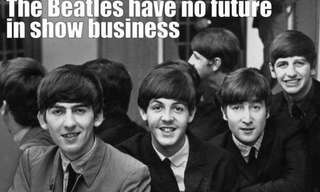
Behold the Worst Predictions in History!
Not every prediction is true, and some of them, like the ones on this list - miss the mark by a mile!
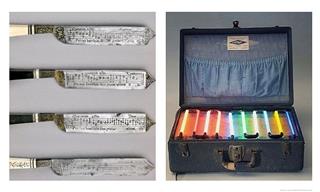
Museum of the Weird: 15 Fascinating Finds
Historical artifacts don't get weirder than this.

7 Conspiracy Stories that Turned Out to be True
These stories are shocking... and they turned out to be true!
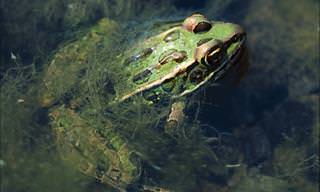
Be Prepared! These Facts About the World Are Pretty Scary
These facts are incredibly fascinating... but they've got an element of spookiness to them too!

115 Incredible Facts You Never Knew About Cats!
Cats are the most popular animal on the internet by far, so we made this extensive list of cat facts that will turn you into a feline expert!

Wow! How Did These Children Survive These Ordeals?
Children are amazingly resilient. These six children suffered terrible ordeals, but they all managed to survive against all odds.
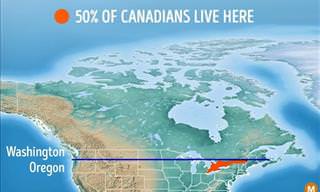
10 Cool Maps That Show How Much Unpopulated Space There Is
These maps will utterly surprise you when you realize just how unevenly the world's population is spread out. Most of the world is quite free of people!

14 Superb Charts That Will Teach You Something Useful!
These 14 charts and maps are here to teach you lots of fun and practical lessons. We can almost guarantee that you’ll find something worth saving and returning to!

12 Typical American Things That Didn’t Originate in the US
Many things we often think are typically American, such as cowboys, comic strips and mac & cheese, have actually started far away from the USA

These Rare and Riveting Pics Reveal Some Captivating Facts
The world is full of rare and unique things that we may have never seen before. Here is a look at 15 such pictures with fascinating stories.

12 Vintage Christmas Songs That Still Warm Hearts
These classic Christmas songs capture the spirit of the season.
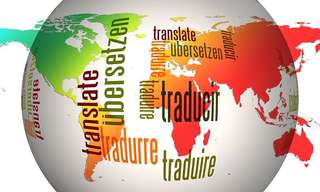
Incredible Maps: The World of Second Languages!
We all know the main languages, but these maps of second languages really surprised me!
 8:40
8:40
1 Day in Pompeii: Experience That Fateful Day!
One day in 79 AD the city of Pompeii was tragically destroyed by an extraordinary volcanic eruption. This video shows you just how the scene would have unfolded.

Dogs: A Super Collection of Posts On Man's Best Friend
This collection will tell you some amazing things about our incredible friends, from learning the different breeds to dog psychology and much more. Have a pawsome day!
 7:52
7:52
This Has to be the Most Graceful Dance Performance Ever!
A breathtaking and beautiful performance by Cheetah Platt and Erica Linz on the gound and in the air.
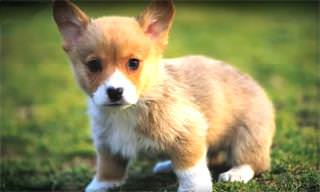 2:10
2:10
God Thought Long & Hard Before Creating the Dog...
They do say dogs are our best friend, and there is a reason for that.

Louis Armstrong Said it Best, Didn't He...?
This amazing song can really open your eyes to nature's beauty, and the beauty we make for ourselves.

Rare Interesting Historical Photos That are Must-See
You won’t find these rare photos in your history books.
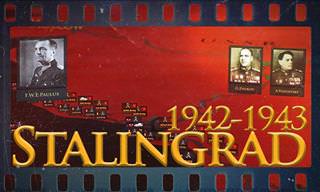 13:08
13:08
The Epic Battle of Stalingrad Comes to Life
One of the most epic battles in history, and the biggest of WWII comes to life and explored in this in-depth video.

Can You Spot the Camouflaged Creatures in These Photos?
These wonderful animals have gone into hiding. Can you find them? If not, just click on the photo to reveal all!

Men vs. Women: What Does the Science Say?
10 studies and articles that dive into the real differences between the sexes, asking the meaningful questions and looking at real data.
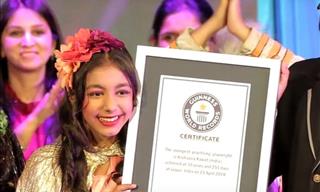
These 10 Children Already Made Outstanding Achievements
Some people achieve great things at a shockingly young age. Check out this list of records broken by children to get inspired.
 11:06
11:06
I've Never Heard This Amazing Tale From the 2nd World War
This is going to be one of the most amazing stories you've ever heard. I guarantee it.

The Real Bonnie and Clyde: 7 Facts About the Outlaw Couple
Media depicts them as glamourous, fearless outlaws. But what was behind the myth of Bonnie and Clyde? These 7 lesser-known facts tell their story.

These 3 Breakthroughs Are Making Historians Jump for Joy!
Learn about some of the most fascinating findings that archaeologists and historians have recently uncovered. Get ready to be amazed!
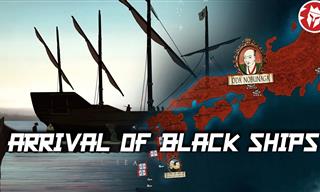 20:39
20:39
History Lesson: How Japan Met Europe for the First Time
This video delves into the fascinating story of how the Portuguese and Japanese of the 16th century met, two distinct worlds, exploring the initial contact.
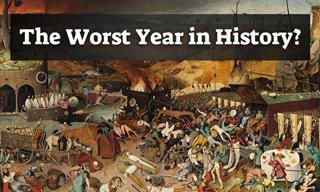
Was This the WORST Year in Human History?
We thought 2020 was probably the worst year in human history. But wait till you read about the chaos that ensued in 536 AD.



